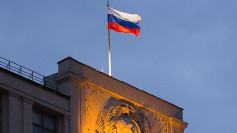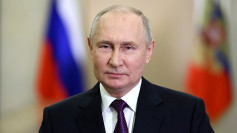After months of diplomatic deadlock, President Donald Trump has authorized a new phase of military and intelligence cooperation with Ukraine, marking a dramatic shift in U.S. policy following his failed Alaska summit with Russian President Vladimir Putin. According to two sources familiar with the matter, Washington has begun sharing intelligence on targets deeper inside Russian territory, including energy infrastructure that had previously been off-limits.
Ukrainian President Volodymyr Zelensky is set to visit the White House on Friday, where he plans to urge Trump to approve long-range Tomahawk missiles to intensify pressure on Moscow. Trump told reporters earlier this week, "I know what he has to say. He wants weapons. He would like to have Tomahawks," while meeting Argentina's President Javier Milei. When pressed on whether he would approve such transfers, Trump replied, "We'll see ... I may," adding, "Do they (Russia) want Tomahawks going in their direction? I don't think so."
The White House's evolving position underscores a broader strategic recalibration since the Alaska meeting, where Trump failed to secure a peace agreement with Putin. The U.S. had previously discouraged Ukraine from striking Russian oil and gas infrastructure while pursuing negotiations, but officials reversed course once the summit ended without progress. One source told CNN that the administration now believes hitting energy facilities could reshape Putin's calculus.
Zelensky has embraced the shift, describing long-range pressure as key to "peace through strength." "We see and hear that Russia is afraid that the Americans may give us Tomahawks, which is a signal that exactly such pressure may work for peace," Zelensky said Sunday. With front lines largely frozen and more than a million casualties, Ukrainian officials see energy targets as one of the few remaining levers capable of producing strategic effect.
Trump, meanwhile, appears to have grown increasingly open to Kyiv's requests. A U.S. official confirmed that supplying Tomahawks "is under serious discussion." The administration has already approved an $825 million arms package that includes 3,350 Extended Range Attack Munition (ERAM) missiles, signaling Washington's willingness to expand Kyiv's strike capabilities. Unlike the shorter-range ATACMs provided under the Biden administration, the ERAMs and Tomahawks would allow Ukraine to hit critical assets deep inside Russia.
However, the shift also risks escalating tensions. The Kremlin has warned that Tomahawks could be nuclear-capable and might require U.S. personnel to operate-an assertion dismissed by American officials but viewed as a sign of Moscow's unease. Trump himself has expressed "amazement" at the idea of Ukraine striking major Russian cities, asking Zelensky during a post-summit call whether his military could hit Moscow or St. Petersburg. Sources told CNN that Zelensky replied they could-if they had the right weapons.
Amid these developments, Trump announced plans for a second in-person meeting with Putin in Budapest, Hungary. "President Putin and I will then meet in an agreed upon location, Budapest, Hungary, to see if we can bring this 'inglorious' war, between Russia and Ukraine, to an end," Trump wrote on Truth Social Thursday. He said the phone call preceding the announcement was "very productive" and that "great progress was made."
Putin's special envoy Kirill Dmitriev reposted Trump's statement on X, calling the upcoming session "positive and productive" and "important for the world." He also accused "warmongers" in the U.K. and E.U. of trying "very very hard to derail peace prospects," adding, "But dialogue and peace and the US-Russia cooperation will prevail."






